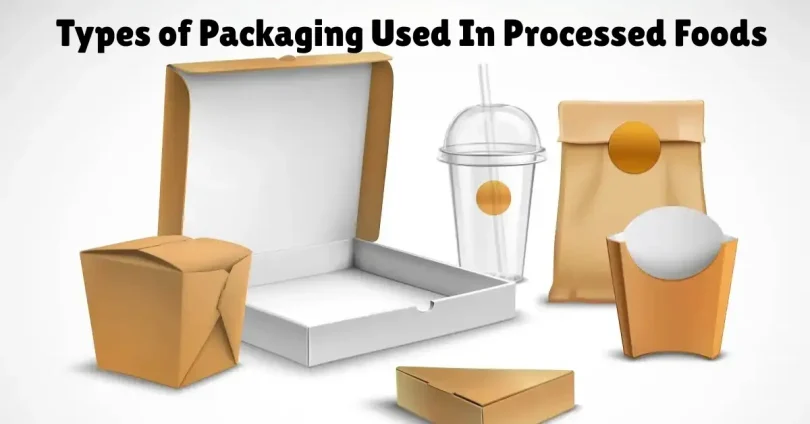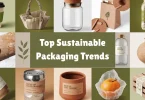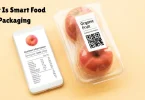Packaging is one of the most critical aspects of the processed food industry. Beyond simply wrapping food, packaging serves multiple functions—it protects against contamination, physical damage, and spoilage while also extending shelf life and enhancing consumer convenience. Furthermore, packaging communicates vital product information such as nutritional value, usage instructions, and expiry dates.
With advancements in technology and rising environmental concerns, the types of packaging used in processed foods have diversified significantly. Today, companies use different packaging solutions depending on the nature of the food, its required shelf life, storage conditions, and market appeal.
Below is a complete guide to the most common types of packaging used in processed foods, along with their features, applications, and benefits.
1. Flexible Packaging
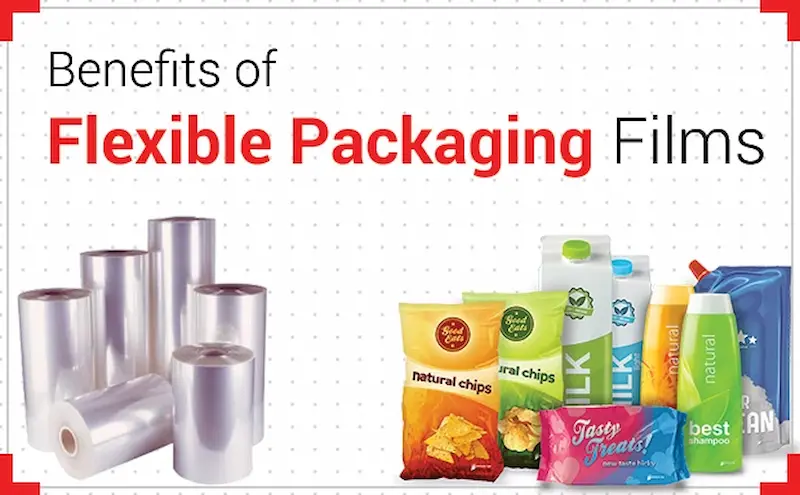
Flexible packaging is one of the most widely used forms in the food industry. As the name suggests, it is made of flexible materials that can easily bend or wrap around products.
Examples
- Plastic pouches
- Sachets
- Wrappers
- Film-sealed bags
Uses in Processed Foods
- Chips, biscuits, and snack packs
- Instant noodles and pasta
- Frozen vegetables and ready meals
- Sauces, ketchup, and single-serve condiments
Advantages
- Lightweight and easy to transport
- Requires less raw material than rigid packaging
- Can be designed in resealable forms for convenience
- Highly customizable with branding, graphics, and information
Flexible packaging is popular because it strikes a balance between cost-effectiveness and functionality while offering good protection for non-fragile products.
2. Rigid Packaging
Rigid packaging is strong, durable, and resistant to deformation. It is typically used for products that need superior protection and longer shelf life.
Examples
- Plastic containers
- Glass jars
- Metal tins
- Cardboard boxes
Uses in Processed Foods
- Canned vegetables, fruits, soups, and meat
- Carbonated and non-carbonated beverages
- Ready-to-eat frozen meals
- Ice cream tubs and dessert containers
Advantages
- High protection against crushing or damage
- Better tamper resistance and sealing options
- Extended shelf life for sensitive foods
Rigid packaging is ideal for products that must maintain shape and require airtight or moisture-proof barriers.
You may also like to read this:
Why Clean Eating Is More Than A Trend | Complete Guide
Top Best Trending Snacks In The Market For Snack Lovers
Top Future Food Innovations To Watch For Smarter Eating
What Is Smart Food Packaging? Everything You Should Know
How Eco-Friendly Packaging Works: Complete Guide For 2025
3. Semi-Rigid Packaging
This category blends the benefits of both rigid and flexible packaging. It offers structural stability while remaining relatively lightweight.
Examples
- Aluminum trays
- Thermoformed plastic containers
- Cartons (Tetra Pak)
Uses in Processed Foods
- Yogurt and dairy cups
- Milk and fruit juices (tetra packs)
- Ready-to-cook meals and desserts
Advantages
- Lightweight yet sturdy
- Excellent barrier against air, light, and moisture
- Easy stacking, transport, and storage
Semi-rigid packaging is often chosen for convenience-based processed foods that need moderate protection without heavy bulk.
4. Glass Packaging
Glass is a traditional packaging material known for its durability and ability to preserve food quality. It is non-reactive, 100% recyclable, and provides a premium look.
Examples
- Glass bottles
- Jars
- Small vials
Uses in Processed Foods
- Pickles, sauces, and vinegar
- Baby food and purees
- Jams, jellies, and honey
- Juices, cold coffee, and soft drinks
Advantages
- Does not react chemically with food
- Preserves original flavor, aroma, and freshness
- Fully recyclable and environmentally friendly
Despite being heavier and more fragile, glass packaging remains popular for premium and sensitive food products.
5. Metal Packaging
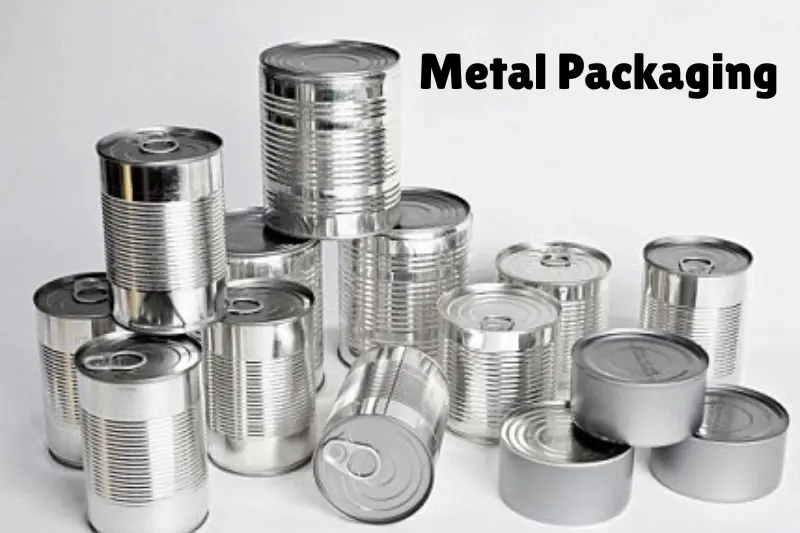
Metals like tin and aluminum are extensively used in food packaging because they provide robust protection against contaminants and preserve food for long durations.
Examples
- Tin cans
- Aluminum cans
- Foil packaging
Uses in Processed Foods
- Canned fish, beans, fruits, and soups
- Energy drinks, sodas, and juices
- Chocolates, butter, and cheese (wrapped in foil)
Advantages
- Superior barrier against oxygen, light, and moisture
- Long shelf life for perishable items
- Strong and tamper-resistant
Metal packaging is highly durable and suitable for foods requiring sterilization and long-term storage.
6. Paper and Cardboard Packaging
Paper-based packaging is among the most sustainable solutions in the industry. It is lightweight, recyclable, and biodegradable, making it ideal for dry and semi-dry products.
Examples
- Corrugated boxes
- Folding cartons
- Paper bags and wraps
Uses in Processed Foods
- Cereal and breakfast boxes
- Bakery items like cakes, pastries, and bread
- Frozen pizzas
- Tea bags and powdered mixes
Advantages
- Eco-friendly and recyclable
- Cost-effective
- Allows high-quality printing for branding
Paper and cardboard packaging are perfect for lightweight processed foods where durability is not the primary concern.
7. Plastic Packaging
Plastic is the most versatile and commonly used packaging material in the food industry. It comes in various forms and offers great convenience to manufacturers and consumers.
Examples
- PET bottles
- HDPE and LDPE containers
- Clamshell packs
Uses in Processed Foods
- Soft drinks, juices, and bottled water
- Dairy products like milk, yogurt, and butter
- Frozen foods, ready meals, and snacks
Advantages
- Affordable and lightweight
- Resistant to breakage
- Available in resealable and transparent options
Plastic dominates processed food packaging due to its durability, versatility, and affordability, although sustainability concerns are driving innovation toward biodegradable alternatives.
8. Vacuum Packaging
Vacuum packaging involves removing air from a package before sealing, which significantly slows bacterial growth and spoilage.
Examples
- Vacuum-sealed pouches
- Vacuum-packed trays
Uses in Processed Foods
- Processed meats, sausages, and seafood
- Coffee beans and ground coffee
- Cheese and other dairy products
Advantages
- Extends freshness and shelf life
- Prevents oxidation and bacterial growth
- Compact and space-saving for storage
This method is widely used for perishable goods requiring extended preservation without chemical additives.
9. Aseptic Packaging
Aseptic packaging sterilizes both food and packaging separately before sealing in a sterile environment. It is a modern solution that ensures food safety and extended shelf life without refrigeration.
Examples
- Tetra Pak cartons
- Multi-layered cartons
- Sterile plastic containers
Uses in Processed Foods
- Milk, flavored milk, and fruit juices
- Ready-to-drink soups
- Nutritional and health drinks
Advantages
- Long shelf life at room temperature
- Preserves natural taste and nutrients
- Lightweight and easy to transport
Aseptic packaging is especially valuable for beverages and liquid-based processed foods distributed globally.
10. Edible and Biodegradable Packaging (Modern Trend)
As sustainability becomes a global priority, eco-friendly packaging innovations are gaining popularity. Edible and biodegradable packaging is designed to reduce environmental impact.
Examples
- Edible films from starch, protein, or seaweed
- Plant-based wraps
- Biodegradable plastics (PLA)
Uses in Processed Foods
- Snack bars and candies
- Confectionery and bakery products
- Eco-friendly takeaway meals
Advantages
- Environmentally sustainable
- Reduces reliance on traditional plastics
- Can add nutritional or aesthetic value
Though still in early adoption stages, edible and biodegradable packaging is expected to revolutionize the processed food industry in the near future.
Additional Functions of Food Packaging
While the main role of packaging is protection, in the modern food industry, it serves multiple purposes beyond safety:
- Protection – Shields food from contamination, spoilage, moisture, oxygen, and light.
- Preservation – Maintains freshness, nutritional quality, and flavor for longer periods.
- Convenience – Provides ease of storage, handling, and usage (e.g., resealable packs).
- Communication – Displays nutritional labels, expiry dates, allergen warnings, and cooking instructions.
- Marketing & Branding – Attractive packaging designs influence buying decisions.
- Portion Control – Single-serve and multi-portion packs meet diverse consumer needs.
- Sustainability – Increasing focus on eco-friendly, recyclable, or biodegradable materials.
Modern Innovations in Food Packaging
The packaging industry is rapidly evolving due to technology and consumer demand for healthier, safer, and more sustainable solutions. Some modern innovations include:
1. Active Packaging
- Uses materials that actively interact with food to extend freshness.
- Example: Oxygen absorbers in meat packaging.
2. Modified Atmosphere Packaging (MAP)
- Replaces oxygen inside packaging with gases like nitrogen or carbon dioxide to slow spoilage.
- Commonly used in meat, salads, and bakery products.
3. Smart Packaging
- Incorporates sensors, QR codes, or time-temperature indicators.
- Allows consumers to track freshness and authenticity.
4. Nanotechnology in Packaging
- Nanocoatings improve barrier properties against moisture and gases.
- Antimicrobial nanoparticles prevent bacterial growth.
5. Edible Coatings
- Thin edible films made from proteins, starch, or wax applied directly to food items like fruits, cheese, or snacks.
Challenges in Food Packaging
Despite advancements, the food packaging industry faces several challenges:
- Plastic Waste & Environmental Impact – Plastic remains dominant but creates sustainability concerns.
- Cost of Sustainable Alternatives – Eco-friendly packaging materials are often more expensive.
- Food Safety Regulations – Packaging must comply with strict health and safety standards.
- Consumer Preferences – People demand both convenience (single-use packaging) and eco-friendliness, creating a balancing act.
- Recycling Issues – Multi-layer packaging, though effective, is difficult to recycle.
Future of Food Packaging
The future of processed food packaging is being shaped by sustainability, technology, and consumer health awareness. Some key future directions include:
- Greater use of biodegradable and compostable packaging to replace single-use plastics.
- Edible packaging adoption for snacks, beverages, and fast food.
- Digital packaging with scannable QR codes providing recipes, sourcing details, and freshness indicators.
- Reusable packaging models (refillable jars, returnable bottles) promoted by eco-conscious brands.
- Minimalist packaging that reduces waste and uses fewer resources while still protecting food.
Final Thoughts
The types of packaging used in processed foods not only protect and preserve products but also add value through convenience, communication, and branding. From flexible pouches for chips to aseptic cartons for juices and biodegradable wraps for snacks, each type serves a specific role based on food requirements.
As the global food industry continues to expand, packaging will evolve further, balancing safety, sustainability, and consumer appeal. The future lies in eco-friendly innovations, smart packaging technologies, and sustainable materials, ensuring that food packaging not only preserves products but also protects our planet.
FAQs
1. What is the importance of packaging in processed foods?
Packaging protects food from contamination, spoilage, and physical damage. It also extends shelf life, provides nutritional and usage information, and enhances convenience and branding.
2. What are the main types of packaging used in processed foods?
The main types include flexible packaging, rigid packaging, semi-rigid packaging, glass, metal, paper and cardboard, plastic, vacuum packaging, aseptic packaging, and edible or biodegradable packaging.
3. What is flexible packaging, and where is it used?
Flexible packaging is made from bendable materials such as plastic films, pouches, and sachets. It’s commonly used for snacks, chips, instant noodles, sauces, and frozen foods.
4. How does rigid packaging differ from flexible packaging?
Rigid packaging is strong and maintains its shape, providing better protection for delicate or perishable foods. Examples include glass jars, plastic containers, and metal tins, commonly used for canned foods, ice creams, and beverages.
5. What is vacuum packaging, and why is it used?
Vacuum packaging removes air from the package before sealing, reducing bacterial growth and oxidation. It’s ideal for meat, seafood, cheese, and coffee products to extend shelf life.

